Ogawa Kazumasa (小川 一眞[1], September 29, 1860 – September 6, 1929) was a Japanese photographer, printer and publisher known for his work in photomechanical printing and photography.
Born in Saitama to the Matsudaira samurai clan, Kazumasa began to study English and photography from the age of 15. Having moved to Tokyo to hone his English language skills, a year later, Ogawa was hired as an interpreter in the Yokohama Police Department. There he also continued to learn photography from Shimooka Renjō (下岡 蓮杖, March 24, 1823 – March 3, 1914), one of Japan’s first photographers.
In 1882, Kazumasa moved to Boston where he took courses in portrait photography and the dry plate process. He also studied collotype printing in Albert Type Company.
Upon his return to Japan in 1884, Ogawa opened a photographic studio in Iidabashi (Kōjimachi), the first in Tokyo. Four years later, he established the Tsukiji Kampan Seizō Kaisha (築地乾板製造会社 Tsukiji dry plate manufacturing company), which manufactured dry plates for use by photographers. In 1889, he set up Japan’s first collotype business, the Ogawa Shashin Seihan jo (小川写真製版所), also referred to as the K. Ogawa printing factory. In the same year, Ogawa worked as an editor for Shashin Shinpō (写真新報, lit. Photography journal), the only photographic journal available at the time, as well as for Kokka magazine (国華, lit. National flower). He printed both magazines using the collotype printing process.
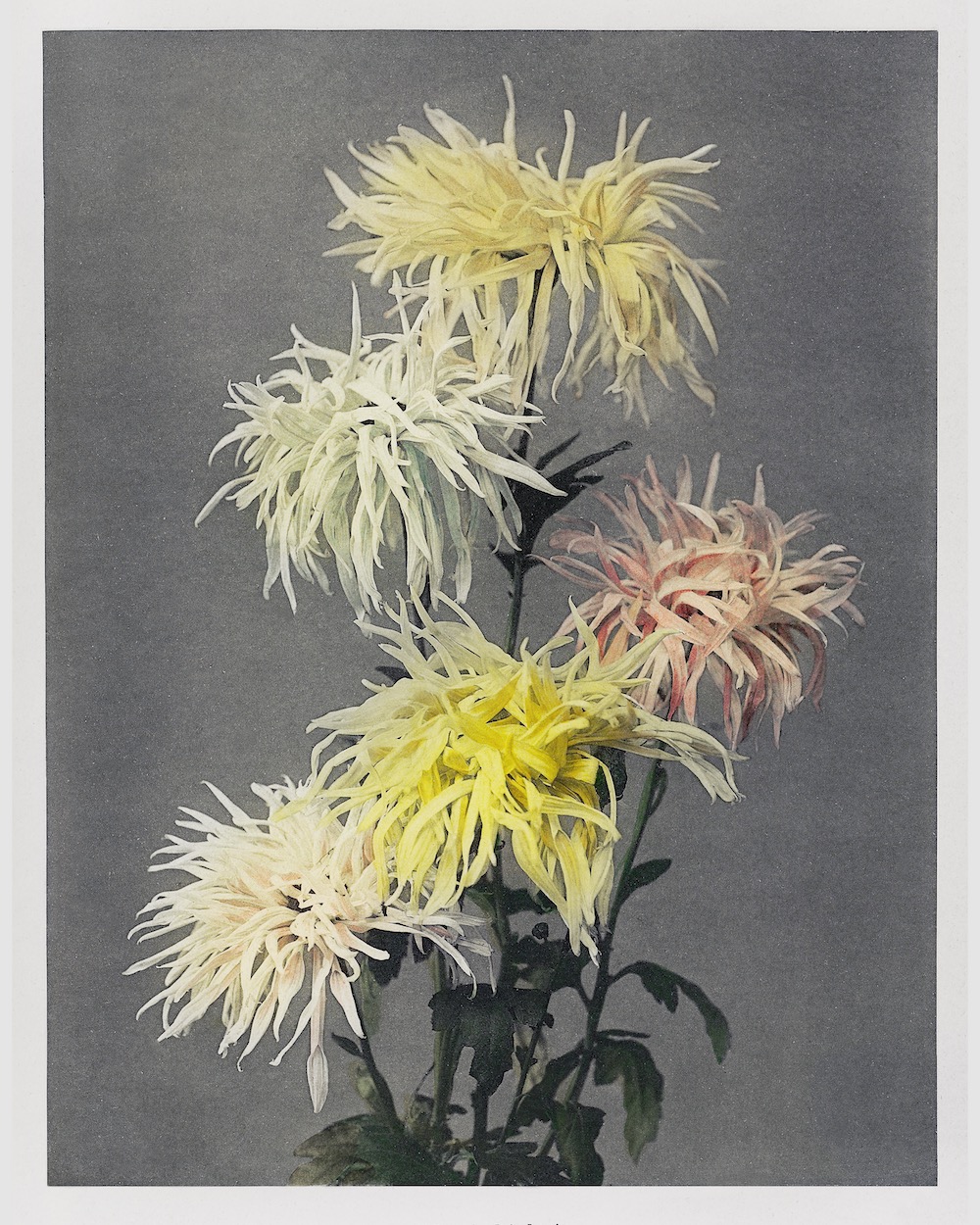
Nami–chi–dori, hand–colored collotype from Some Japanese Flowers (1896) by Kazumasa Ogawa. Original from the J. Paul Getty Museum. Buy the print
Ogawa was a founding member of the Japan Photographic Society, which gathered photography amateurs from all around Japan. In 1891, he was charged with taking 100 pictures of Tokyo’s most attractive geisha, to commemorate the opening of the Ryōunkaku, Japan’s first Western-style skyscraper.
In 1894 he met the writer Alicia Little who was visiting Japan from her home in China. She was already a published author and she had a diary that she had written. Ogawa supplied photographs and it was published as My Diary in a Chinese Farm. The book described their stay on a farm near the Yangtse River as they avoided the summer heat at their home in Chingqing.

Imo–se–yama, hand–colored collotype from Some Japanese Flowers (1896) by Kazumasa Ogawa. Original from the J. Paul Getty Museum. Buy the print
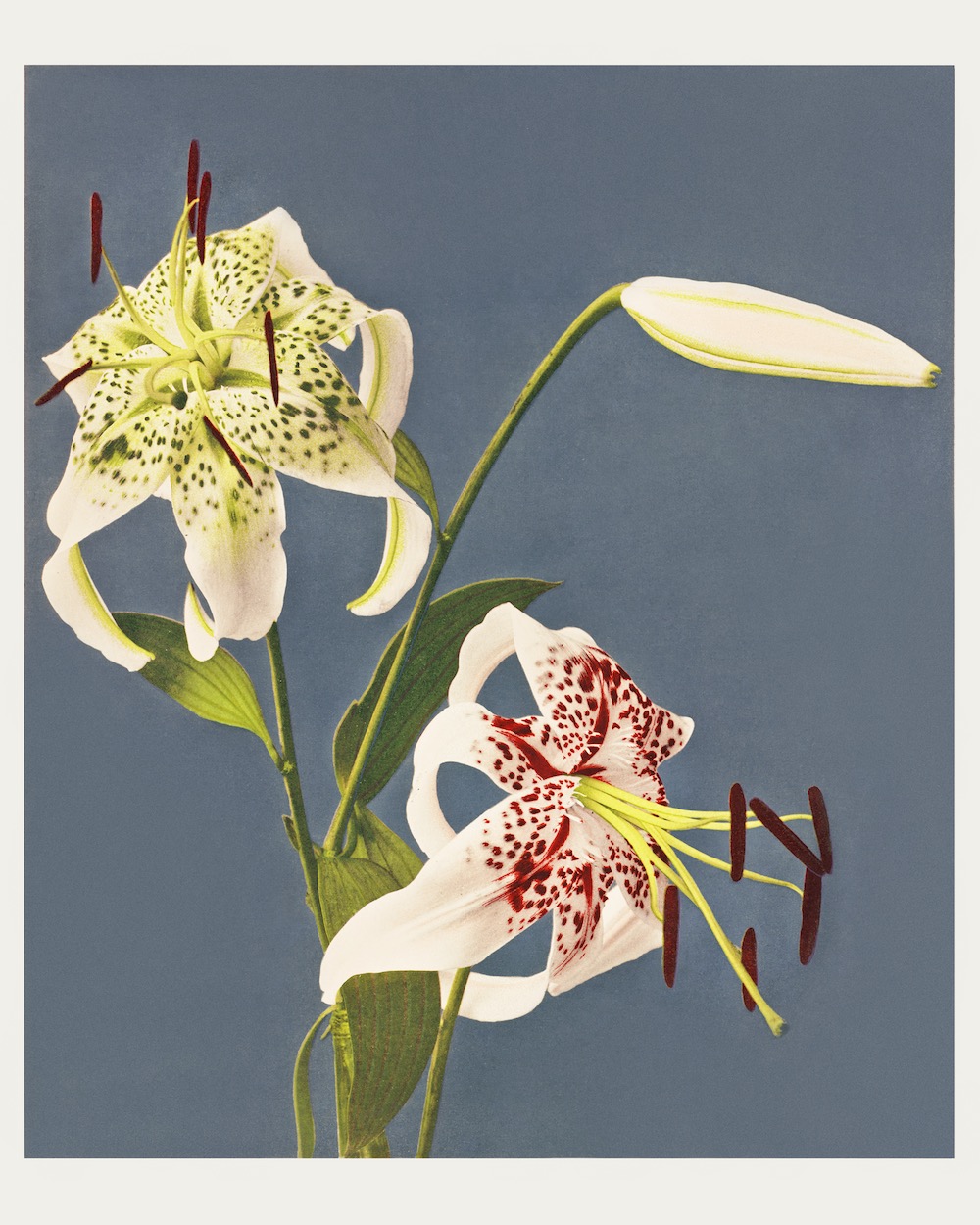
Lilies collotype from Japan. Described and Illustrated by the Japanese (1897) by Kazumasa Ogawa. Original from the J. Paul Getty Museum.
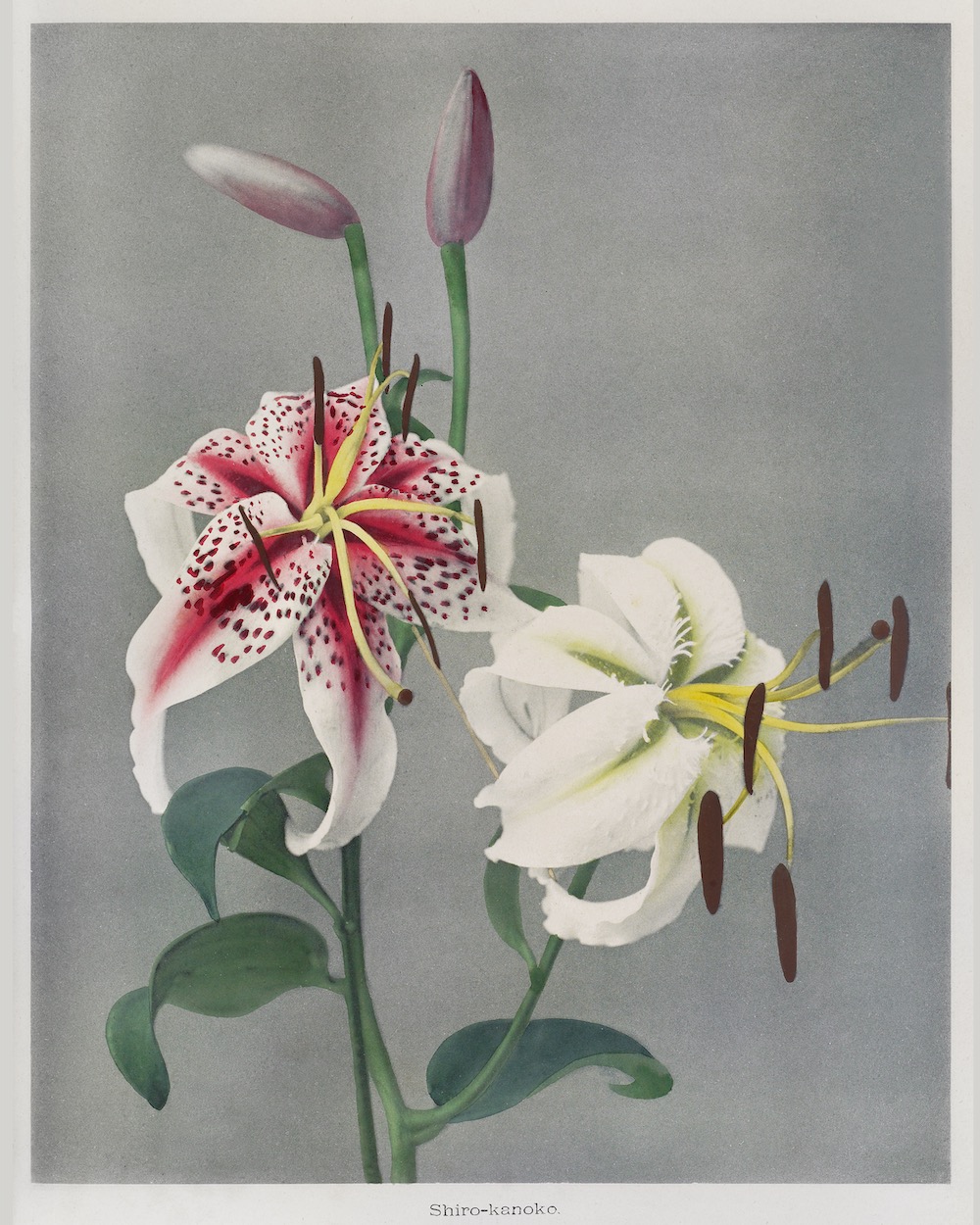
Lily, hand–colored collotype from Some Japanese Flowers (1896) by Kazumasa Ogawa. Original from the J. Paul Getty Museum.

Beautiful photomechanical prints of Three Pink Chrysanthemum (1887–1897) by Ogawa Kazumasa. Original from The Rijksmuseum.

Beautiful photomechanical prints of Striped Bindweed Flowers (1887–1897) by Ogawa Kazumasa. Original from The Rijksmuseum.
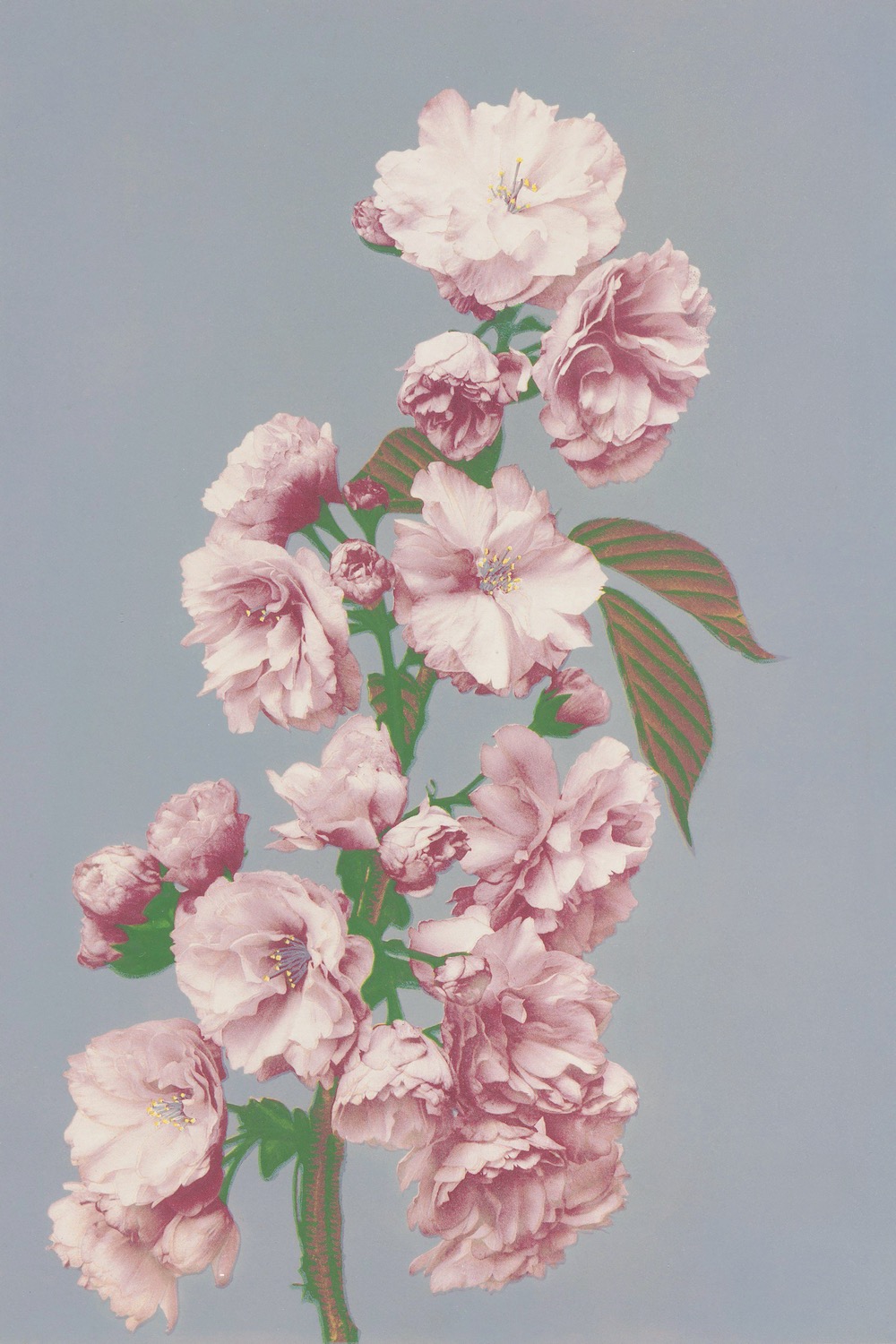
Beautiful photomechanical prints of Cherry Blossom (1887–1897) by Ogawa Kazumasa. Original from The Rijksmuseum.
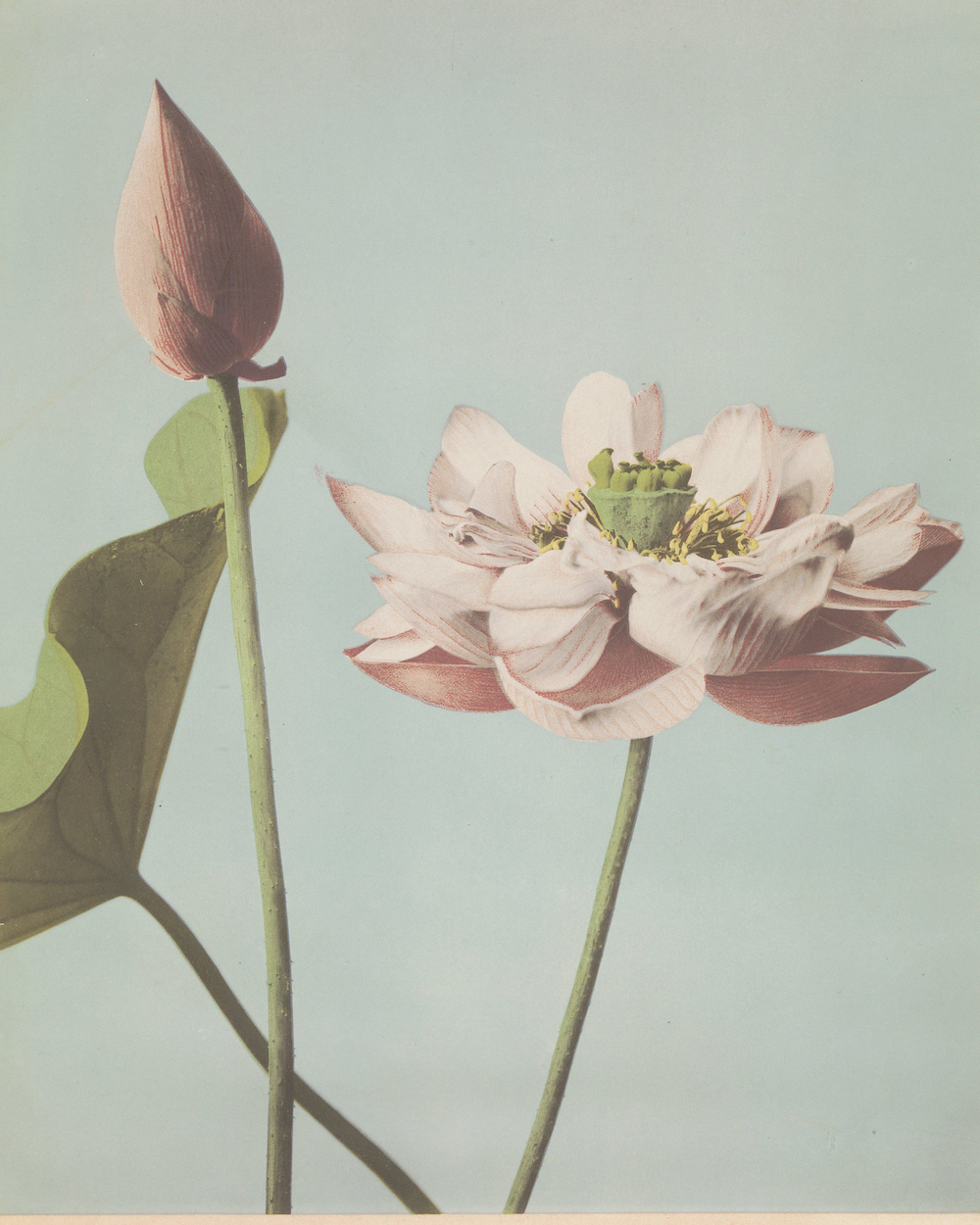
Lotus Flowers, Kazumasa Ogawa (attributed to), c. 1887 – in or before 1897. Buy the print
Buy prints of these images here in the shop.
With thanks to Raw Pixel.
Would you like to support Flashbak?
Please consider making a donation to our site. We don't want to rely on ads to bring you the best of visual culture. You can also support us by signing up to our Mailing List. And you can also follow us on Facebook, Instagram and Twitter. For great art and culture delivered to your door, visit our shop.



